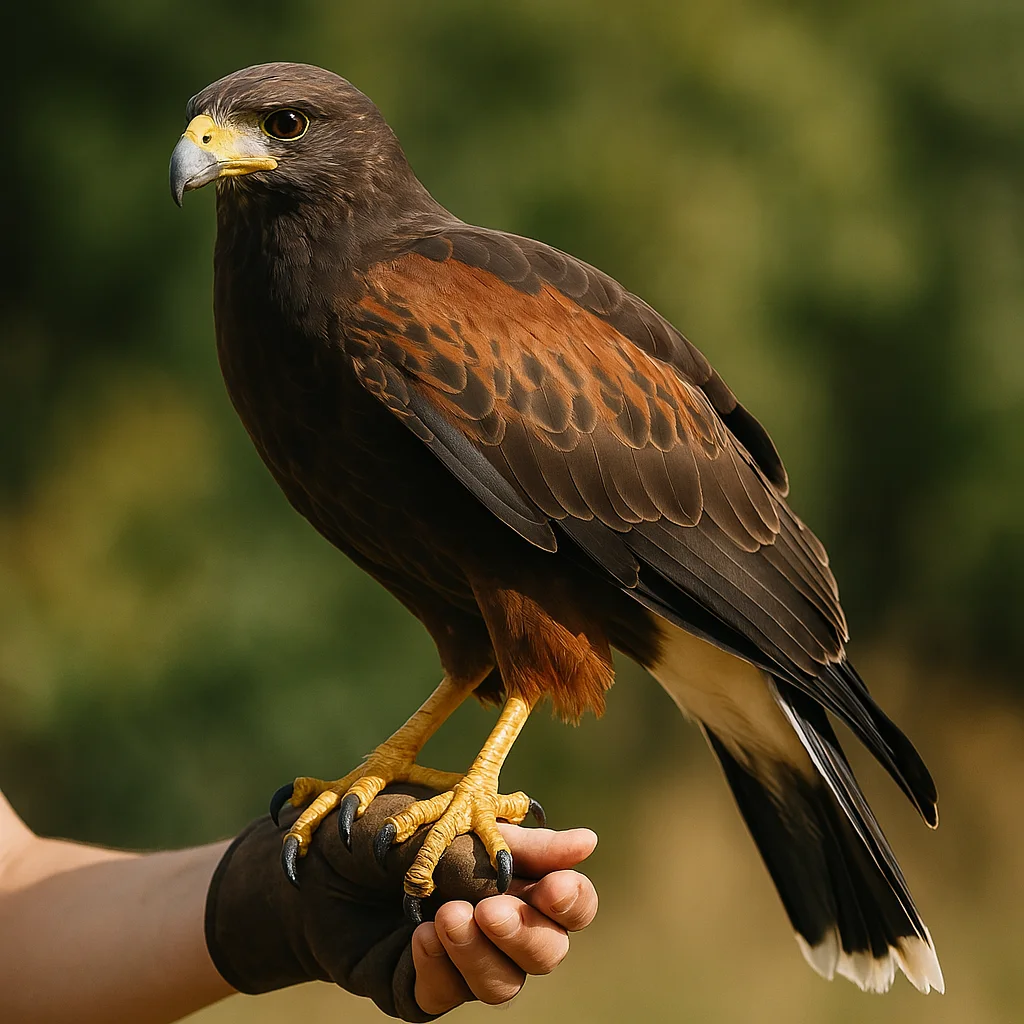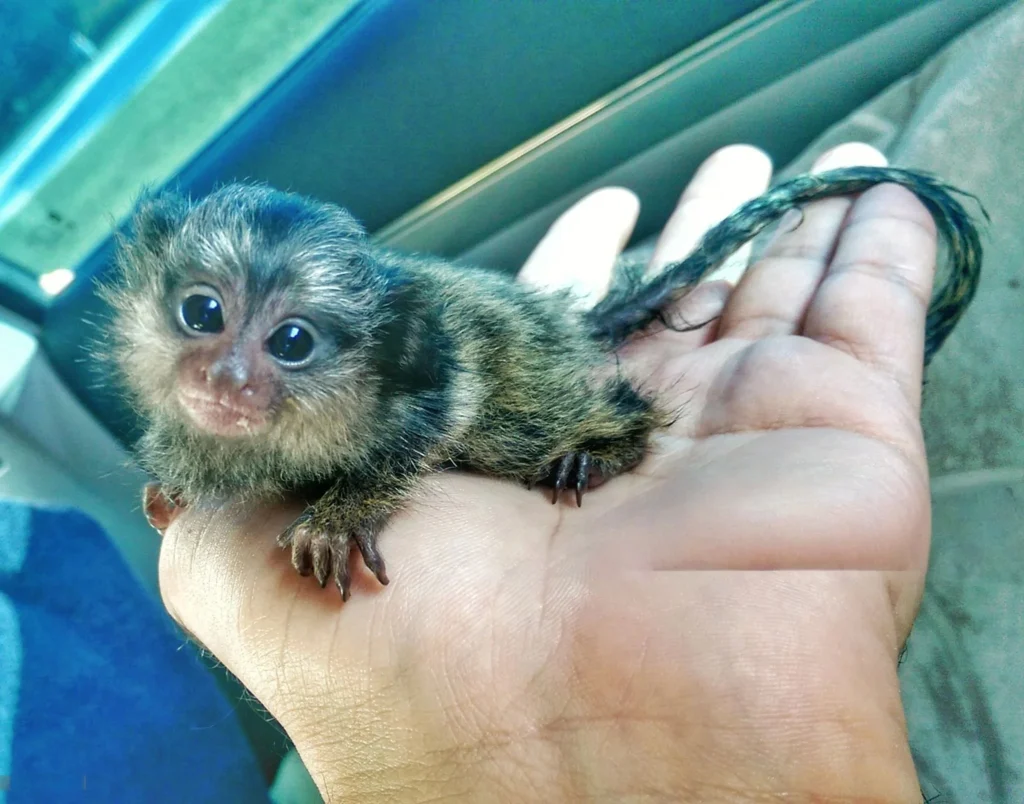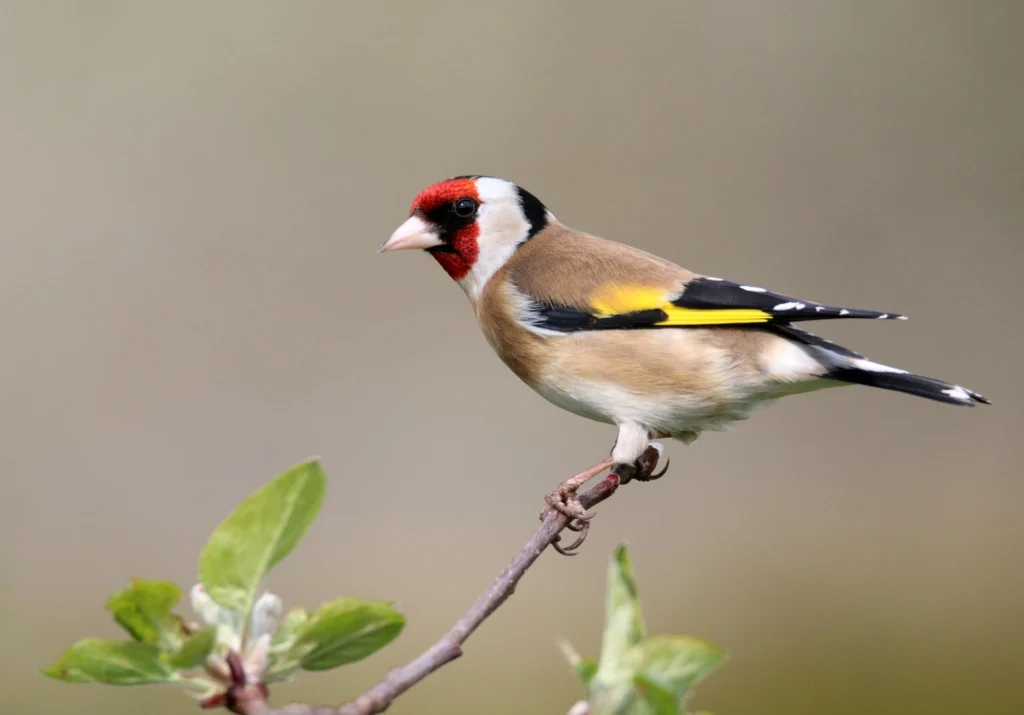Can you have a hawk as a pet? While it is very well possible to keep a hawk, I must admit they don’t make good pets. However, if you wish to own a hawk there are several hurdles you have to take. In this article, you get to know what it’s like to own a pet hawk.
Birds of prey have a very special appeal to many of us. But in general, you can that owning one is not a great deal. No matter if we talk about eagles, falcons or hawks, it’s better to leave these creatures in the wild.
Additionally, many people who decide to get one find that they were originally looking for something else. Hawks don’t have a special personality, they don’t like to spend time with humans and they make a lot of work.
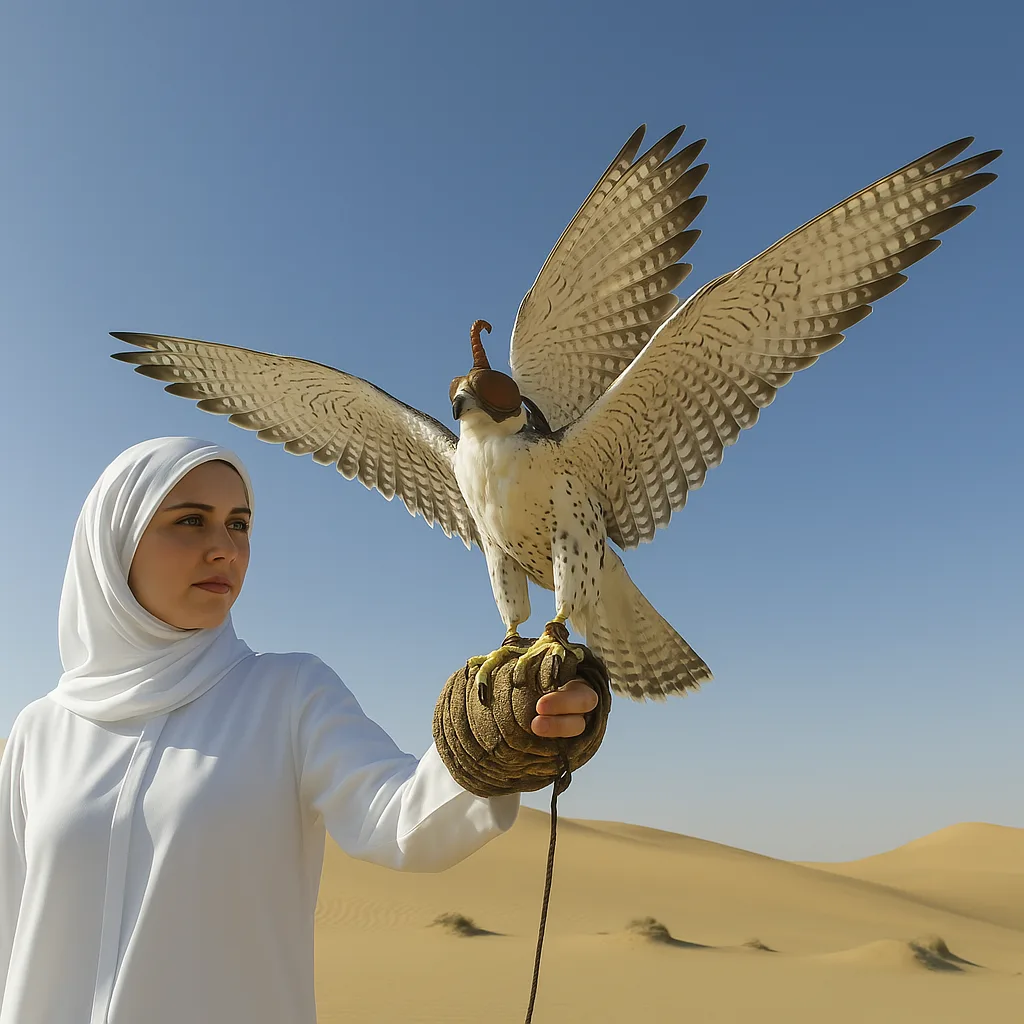
Hawks are powerful and majestic birds, but owning one requires strict legal and ethical considerations. If you’re fascinated by birds, you might enjoy our article on the A Comprehensive Exploration of Birds’ Fascinating Ways.
The Truth About Hawks as Pets
The idea of having a majestic hawk as a pet is captivating. These powerful birds of prey have long symbolized freedom and keen hunting skills. However, the reality of keeping a hawk as a pet is far more complex than many people imagine. This article will delve into the facts, addressing the legality, care requirements, and ethical considerations of keeping a hawk as a pet.
Is a Hawk a Good Pet?
The simple answer is no. Hawks, including the red-tailed hawk, are not domesticated animals. Their instincts and needs are not suited to living in a typical household. They require specialized care, extensive training, and a significant commitment that most individuals cannot provide.
Pet Hawk Legality
One of the first questions many people ask is, “Can you have a falcon as a pet?” or “Is it legal to have a hawk as a pet?”. The legality of owning a hawk or a falcon in most countries, including the United States, is heavily restricted.
- Falconry Permits: In the US, owning a hawk or falcon is primarily legal for licensed falconers. Falconry is a highly regulated form of hunting that requires extensive training, apprenticeship, and passing rigorous exams.
- State and Federal Laws: Both state and federal laws protect birds of prey. It is illegal to possess a hawk, falcon, eagle, or other raptor without the necessary permits.
- Pet Hawk for Sale: You might see terms like “pet hawk for sale” online, but be very cautious. Any sale of these birds without proper documentation is likely illegal.
Pet Falcon vs. Pet Eagle
People often wonder about the differences between these birds:
- Falcon vs. Hawk: Falcons are generally smaller and swifter than hawks, specializing in aerial pursuits. Hawks are more robust and versatile, often hunting from perches.
- Pet Eagle: Eagles are even larger and more powerful than hawks and falcons. The laws protecting eagles are even stricter than those for other raptors, making it virtually impossible to legally keep one as a pet.
Pet Hawk Price
The cost of acquiring a hawk legally through falconry is not a simple purchase price. The expenses include:
- Training and Apprenticeship: This is a significant investment of time (often years) and money.
- Equipment: Specialized equipment such as jesses, swivels, leashes, hoods, perches, and weathering areas are required.
- Veterinary Care: Birds of prey need specialized veterinary care, which can be expensive.
- Housing: Providing an appropriate outdoor enclosure or “mews” is a major expense.
It’s not really accurate to talk about a “hawk pet price” in the same way you would for a dog or cat. The ongoing costs and commitment are substantial.
Red Tailed Hawk Pet
The red-tailed hawk is a common species in North America. While a licensed falconer might work with a red-tailed hawk, it’s crucial to understand that this is for the purpose of falconry, not for keeping the bird as a “pet” in the traditional sense.
Baby Hawk
Finding a “baby hawk” might seem like a way to start, but taking a young bird from the wild is illegal and detrimental to the hawk’s well-being. Young hawks need specialized care from their parents to survive.
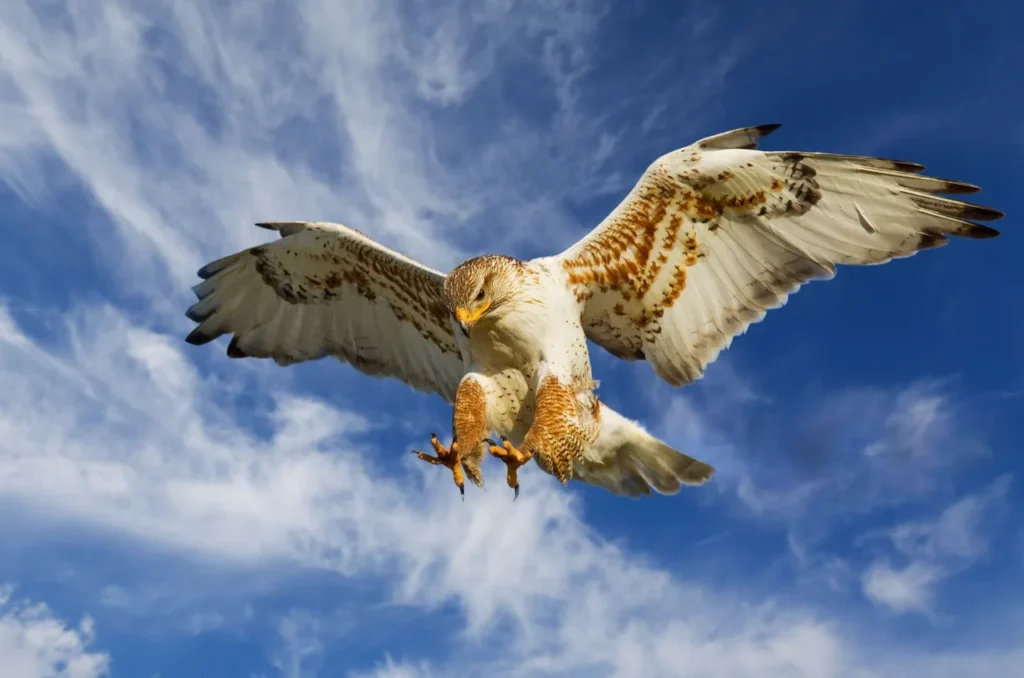
The Care of a Hawk Pet
Caring for a hawk is incredibly demanding and requires a deep understanding of avian biology and falconry practices.
1. Housing (The Mews): A Fortress and Sanctuary
- Size and Design: The mews isn’t just a cage; it’s a specialized structure designed for the hawk’s well-being and safety. The size must be significant enough to allow the hawk to fully extend its wings without touching the sides or roof during “wing-flapping” exercises. A general guideline is a minimum of 8 feet wide, 8 feet long, and 8 feet high for a medium-sized hawk, but larger species will require considerably more space.
- Security: The mews must be absolutely predator-proof. This means strong, heavy-gauge wire mesh (often double-layered) that cannot be torn or bent by other animals. The floor should be solid (concrete or packed earth) to prevent digging predators from entering. Secure locking mechanisms on all doors are essential to prevent accidental escapes or unauthorized access.
- Protection from Elements: The mews needs to offer protection from harsh weather conditions. This includes:
- Rain and Snow: A solid roof is crucial.
- Sun: Partial shade is necessary to prevent overheating. This can be achieved through natural vegetation outside the mews, strategically placed solid panels, or shade cloth.
- Wind: While some airflow is beneficial, excessive wind can be stressful. Windbreaks might be necessary depending on the location.
- Perches: Multiple perches of varying heights, diameters, and materials (natural branches, artificial perches wrapped in natural fiber) are essential. This allows the hawk to exercise its feet, maintain balance, and choose comfortable resting spots. Perches should be easy to clean and disinfect.
- Hygiene: The mews must be designed for easy cleaning. A sloped floor can aid in drainage. Regular removal of droppings and uneaten food is critical to prevent the buildup of bacteria and parasites. Disinfection should be performed regularly using bird-safe products.
- Water Source: A clean and constant supply of fresh water is vital for drinking and bathing. The water dish should be large enough for the hawk to bathe in but also easy to clean. Freezing temperatures require heated water sources.
2. Diet: The Precision of Whole Prey
- Nutritional Requirements: Hawks have very specific dietary needs. They require a high-protein, moderate-fat diet with essential vitamins and minerals. Commercial pet food, even those marketed for carnivorous pets, lack the necessary balance and whole components found in natural prey. “Black hawk pet food” is definitely not formulated for raptors and could lead to severe health problems.
- Whole Prey Items: The ideal diet consists of whole animals, including bones, fur/feathers, and organs. This provides a natural balance of nutrients, including calcium from bones and essential fatty acids from organs. Examples of appropriate prey include:
- Rodents: Mice, rats, gerbils
- Birds: Quail, chicks, pigeons (disease-free sources are crucial)
- Insects: Some smaller hawks may consume large insects as part of their natural diet.
- Variety: Offering a variety of prey items can help ensure a broader range of nutrients and prevent the hawk from becoming fixated on one type of food.
- Feeding Schedule and Management: The amount and frequency of feeding depend on the hawk’s species, age, activity level, and the time of year. Careful monitoring of the hawk’s weight and body condition is essential to adjust the diet accordingly. Overfeeding can lead to obesity and related health issues.
- Sourcing Prey: Obtaining a reliable and safe source of prey is a significant challenge. Owners may need to breed their own prey, purchase from reputable suppliers who guarantee disease-free animals, or (where legal and ethical) trap wild prey. However, trapping carries risks of injury to the hawk and exposure to diseases.
- Hygiene During Feeding: Strict hygiene practices must be followed when handling prey to prevent the transmission of diseases to the hawk and the handler.
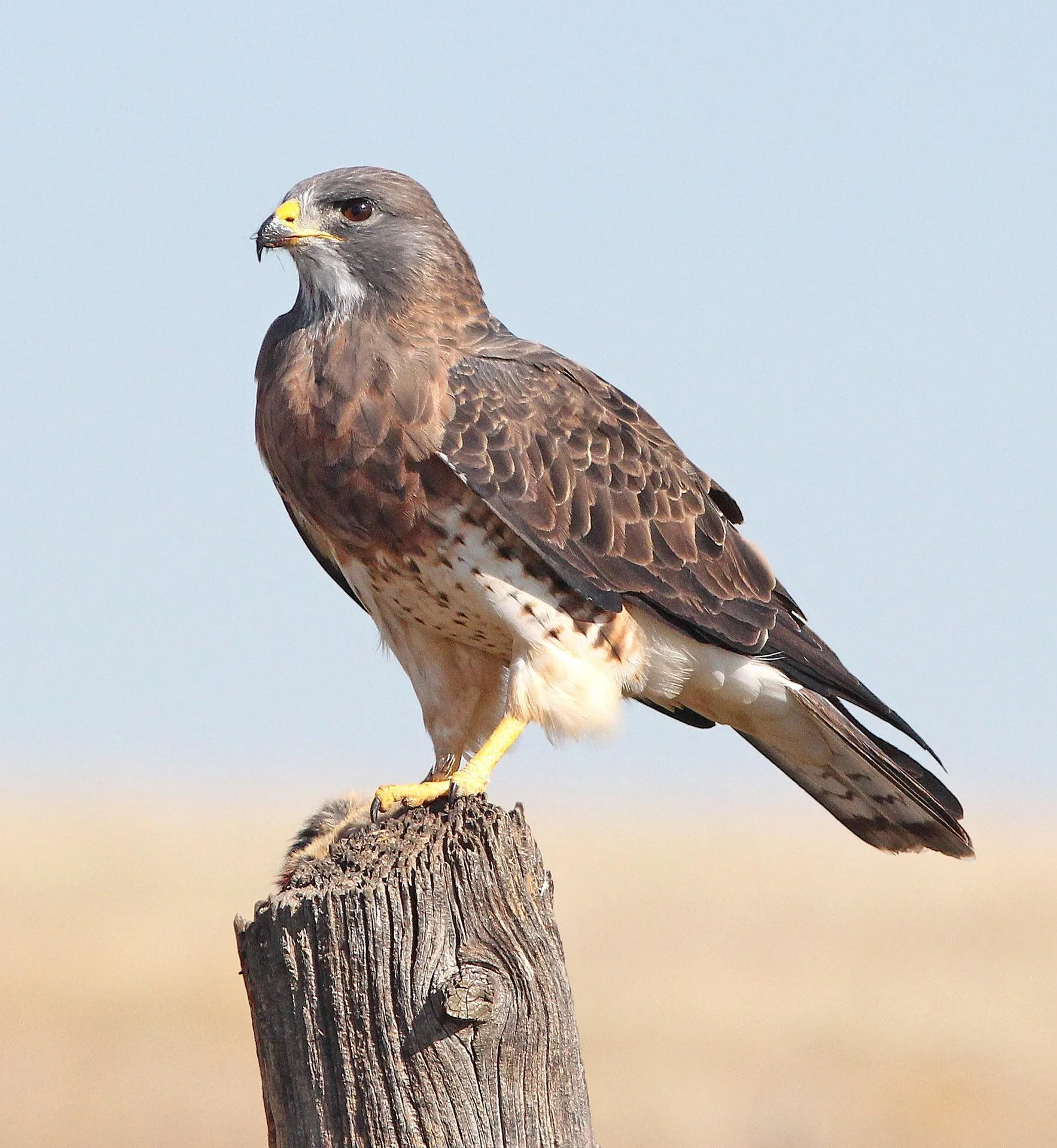
3. Training: A Partnership Built on Trust and Expertise
- Falconry Techniques: Training a hawk goes far beyond simple obedience. It involves applying specialized falconry techniques to build a working relationship based on trust and positive reinforcement. This includes:
- Manning: The process of habituating the wild hawk to human presence and handling. This requires patience and consistent, gentle interaction.
- Luring: Using a feathered lure to teach the hawk to fly to the handler.
- Creance Flying: Flying the hawk on a long line to build flight muscles and practice responding to the lure.
- Free Flying: Eventually allowing the hawk to fly free and return to the handler. This requires extensive training and a deep understanding of the hawk’s behavior and the environment.
- Time Commitment: Training is a significant time commitment, often requiring daily sessions. It can take months or even years to fully train a hawk.
- Expertise: Proper training requires in-depth knowledge of hawk behavior, psychology, and falconry techniques. Attempting to train a hawk without this expertise can be dangerous for both the handler and the bird. Seeking guidance from experienced falconers or joining falconry clubs is highly recommended.
- Legal Requirements: In many jurisdictions, owning and training a hawk requires specific permits and licenses. These often involve demonstrating knowledge of falconry practices and passing examinations.
4. Health Care: Specialized Attention for a Specialized Creature
- Avian Veterinarian: Finding a veterinarian with expertise in avian medicine, particularly raptors, is crucial. General pet vets often lack the specialized knowledge to diagnose and treat hawk-specific health issues. Clinics like “Hawkins pet and exotic animal clinic” (if they specialize in exotics and birds of prey) would be appropriate.
- Regular Checkups: Annual or bi-annual checkups with an avian vet are essential for preventative care, including parasite screening, blood work, and physical examinations.
- Common Health Issues: Hawks are susceptible to various health problems, including:
- Parasites: Internal (worms, coccidia) and external (mites, lice).
- Fungal Infections: Aspergillosis is a common and serious respiratory infection in birds of prey.
- Bacterial Infections: Various bacteria can cause illness.
- Injuries: Hawks can be prone to injuries, especially during training or if housed improperly.
- Nutritional Deficiencies: Improper diet can lead to serious health problems.
- Heavy Metal Poisoning: Ingestion of lead or zinc can be fatal.
- Emergency Care: Having a plan for emergency veterinary care is vital. Knowing the location and contact information of the nearest avian vet who can handle raptors is crucial.
- Medication Administration: Administering medication to a hawk can be challenging and often requires specialized techniques.
5. Enrichment: Keeping a Wild Spirit Engaged
- Mental Stimulation: Hawks are intelligent creatures and can become bored and stressed in captivity if not provided with adequate mental stimulation. This can include:
- Training Sessions: Regular training provides mental challenges and reinforces the bond with the handler.
- Puzzle Feeders: Presenting food in a way that requires the hawk to work for it can be enriching.
- Novel Objects: Introducing safe, novel objects into the mews (under supervision) can provide stimulation.
- Physical Stimulation: Opportunities for exercise are crucial for maintaining physical health and preventing muscle atrophy.
- Flying: Regular flying, whether on a creance or free flight (for trained hawks), is essential.
- Wing Flapping: The mews should be large enough to allow for vigorous wing flapping.
- Bathing: Providing a water source for bathing allows for natural preening behavior.
- Environmental Enrichment: Creating a varied and stimulating environment within the mews can improve the hawk’s well-being. This can include:
- Natural Perches: Different types of perches provide varied tactile experiences.
- Vegetation (Outside the Mews): Visual stimulation from natural surroundings can be beneficial.
- Hiding Spots: Providing areas where the hawk can feel secure can reduce stress.

The Ethical Considerations:
It’s crucial to emphasize the ethical considerations of keeping a hawk as a “pet.” Hawks are wild animals with complex needs that are often difficult to fully meet in a captive environment. Unless the individual is a licensed falconer with the experience, time, resources, and legal authorization, keeping a hawk as a pet is generally not recommended and may be illegal. The focus should always be on the hawk’s welfare and ensuring its needs are met to the highest possible standard.
In conclusion, caring for a hawk is not a casual undertaking. It demands a deep commitment to understanding avian biology, mastering falconry techniques, providing specialized housing and diet, ensuring expert veterinary care, and offering constant enrichment. The term “pet” significantly understates the level of responsibility and expertise required.
Pet Hawks Cost A Lot Of Money
Now that you know how to get a pet hawk, let’s talk about the costs. So how much is a hawk? That really depends. Factors are the age, if the bird is already trained and the exact species.
While 16 species are living in the United States and Canada, the red-tail hawk is most common under falconers. Different websites list prices between 600 and 5000 $.
Training a hawk takes much time which is the reason why you would have to pay upwards of 2000 $ for a successful hunter.
After you bought the bird, the real costs only start to occur. You need the aviary and many other items and equipment that is needed for falconry.
Hawks Need A Special Vet
Only a few veterinarians have experience with birds of prey and are able to treat these creatures. Be prepared to travel long distances even for regular check-ups which are inevitable.
Of course, vets with qualification for hawks will send large bills that add up.
A Cage Is Not Enough
Pet birds live in cages and they will fly through your rooms every now and then, right? Nothing could be more wrong for hawks.
They need a large aviary with an enclosure that protects them from harsh weather conditions. Plan to dedicate a good part of your garden to this type of habitat. Don’t have a garden? Don’t worry, you can build it indoors but you would need a whole room for your bird.
Be prepared to clean it up every day. Hawks poop a lot and you would have to clean it up.
Ethical Considerations
Beyond the legal and practical challenges, there are significant ethical considerations:
- Wild Animals: Hawks are wild animals with complex needs that cannot be fully met in captivity.
- Quality of Life: Even in the best captive situations, a hawk’s quality of life is likely to be compromised compared to living in the wild.
The care needs of hawks can be intense. If you’re looking for less demanding exotic pets, consider reading about Chinchilla as a Pet.
Hawk Behavior and Abilities
Understanding a hawk’s natural behavior is crucial to understanding why they are not suited as pets.
- How Powerful is a Hawk? Hawks possess incredible strength and agility. Their sharp talons and powerful beaks are designed for hunting and killing prey.
- Can a Hawk Pick Up a 10 lb Cat? While a hawk is powerful, their ability to carry weight varies by species. Very large hawks can carry several pounds, but a 10-pound cat would be a very challenging load, and they typically hunt smaller prey.
Hawk Symbolism
Hawks have held symbolic meaning across cultures:
- Is Hawks Evil or Good? In most cultures, hawks are seen as symbols of power, vision, and keen awareness, and are generally not associated with evil.

Hawk Vulnerabilities
Hawks also have vulnerabilities:
- What is Hawk Weakness? Hawks can be vulnerable to habitat loss, prey scarcity, and injuries.
Hawk Interactions
- What can defeat a hawk? While powerful, hawks can be preyed upon by larger raptors, such as eagles, or other predators, especially when injured or young.
Hawk Strength
- Is A Hawk More Powerful Than an Eagle? Eagles are generally larger and more powerful than hawks, but both are formidable birds of prey.
- What is the Strongest Type of Hawk? The Ferruginous Hawk is one of the largest and most powerful hawks in North America.
Hawk Habitats
Hawks live in a variety of habitats
- Hawkesbury Pet Store, Hawkesbury Pet Shelter, Hawkesbury Pet and Exotic Animal Clinic, Hawkes Bay Pet Friendly Accommodation, Hawks Nest Pet Friendly Accommodation, Hawks Nest Holiday Rentals Pet Friendly: These locations may offer services or products for typical domesticated pets. However, these places do not have the resources for wild animals.
- Kitty Hawk Pet Friendly Rentals & Kitty Hawk Pet Friendly Hotels: These accommodations might allow common pets, but not birds of prey.
- Hawks Cay Pet Policy & Hawkshead Cottages Pet Friendly: Like the locations previously, these accommodations are for common pets.
Other terms
Which is more powerful, a hawk or a falcon?
Generally, hawks tend to be larger and more powerful in terms of strength and build, often tackling larger prey using their strong talons. Falcons, on the other hand, rely more on speed and agility in flight to capture their prey, with some species like the Peregrine Falcon being the fastest animals on Earth in a dive. If a territorial dispute or a fight over prey occurred on the ground, a hawk would likely have the advantage due to its size and strength. In the air, a falcon’s speed could be a significant advantage.
What is the difference between a falcon and a hawk?
The main differences lie in their wing shape and hunting style.
| Feature | Falcon | Hawk |
|---|---|---|
| Wing Shape | Long, pointed | Rounded, broad |
| Tail Shape | Narrow | Broad |
| Flight Style | Rapid wingbeats, high-speed dives | Gliding, soaring, hovering |
| Hunting Style | Often catches prey in mid-air, stooping | Ambush from perch or in flight, pursuit |
| Beak | Often has a “tooth” for severing neck | Strong, curved beak for tearing flesh |
| Size | Generally smaller than many hawks | Can range from small to large |
| Agility | Highly agile in flight | Agile, but less focused on extreme speed |
| Primary Prey | Birds, insects, small mammals | Varies greatly (mammals, birds, reptiles) |

Is a hawk more powerful than an eagle?
Eagles are generally larger and more powerful than hawks. They have a greater wingspan, stronger talons, and can take down significantly larger prey.
Is falcon a female bird?
No, “falcon” is not specifically a female bird. It is the general term for birds of prey belonging to the genus Falco. However, in historical falconry terms in English, the word “falcon” sometimes referred specifically to a female Peregrine Falcon, while a male hawk or falcon was called a “tiercel.” In modern usage, “falcon” refers to both male and female birds of those species.
Can hawks lay an egg?
Yes, female hawks lay eggs. This is how they reproduce.
Do hawks mate for life?
Many hawk species form lasting pair bonds and are considered monogamous, meaning they typically have one mate at a time. These pairs often return to the same nesting sites year after year. However, if one mate dies, the other will often find a new partner.
Do hawks have good hearing?
Hawks have reasonably good hearing, although their sense of hearing is generally not as highly developed as their eyesight or as specialized as that of owls. Their hearing is sufficient to detect the sounds of their prey.
Do raptors mate for life?
Many raptor species, including hawks and eagles, form lasting pair bonds and are considered monogamous. They often return to the same nesting sites, and the pair bond is re-established each breeding season. However, this isn’t always a strict “mate for life” situation, as they may find a new mate if their original partner dies. Some other raptor species may have different mating patterns.
Can a hawk pick up a 10 lb cat?
While hawks are powerful, their ability to carry weight varies by species. Very large hawks can carry several pounds, but a 10-pound cat would be a very challenging load, and they typically hunt smaller prey.
Is a hawk male or female?
A hawk can be either male or female. In many hawk species, the females are actually larger than the males (this is called sexual dimorphism).
How powerful is a hawk?
Hawks possess incredible strength and agility. Their sharp talons and powerful beaks are designed for hunting and killing prey.

Is a hawk more powerful than an eagle?
Eagles are generally larger and more powerful than hawks, but both are formidable birds of prey.
What is hawk weakness?
Hawks can be vulnerable to habitat loss, prey scarcity, and injuries.
Is hawks evil or good?
In most cultures, hawks are seen as symbols of power, vision, and keen awareness, and are generally not associated with evil.
What can defeat a hawk?
While powerful, hawks can be preyed upon by larger raptors, such as eagles, or other predators, especially when injured or young.
What is the strongest type of hawk?
The Ferruginous Hawk is one of the largest and most powerful hawks in North America.
Is It Legal To Own A Hawk?
This is the first problem that occurs when people decide that they want to have a pet hawk. In the United States, Canada and Mexico these birds are protected under the Migratory Bird Treaty Act.
The law says, that it’s illegal to keep birds as pets that are native in these countries. In the case of raptors, there is a way around this law: becoming a master falconer.
A falconer is allowed to keep birds of prey including vultures. But to be clear from the beginning, it’s a lot of work to become the license. For example, you need to find a falconer who is willing to take you as an apprentice.
After a few years of education, you have to pass an exam to get the license. Think you are done now and allowed to keep a pet hawk? I have to disappoint you. The state will send someone who reviews the enclosure and habitat you provide for the bird.
Only if everything meets the standards you can go on.
Conclusion
The allure of having a hawk as a pet is understandable, but the reality is that these are wild animals that require specialized care and legal permissions that are very difficult to obtain. Falconry is a demanding pursuit, not a casual pet ownership endeavor. Those who admire these magnificent birds are best served by appreciating them in their natural habitats or supporting conservation efforts that protect them.
